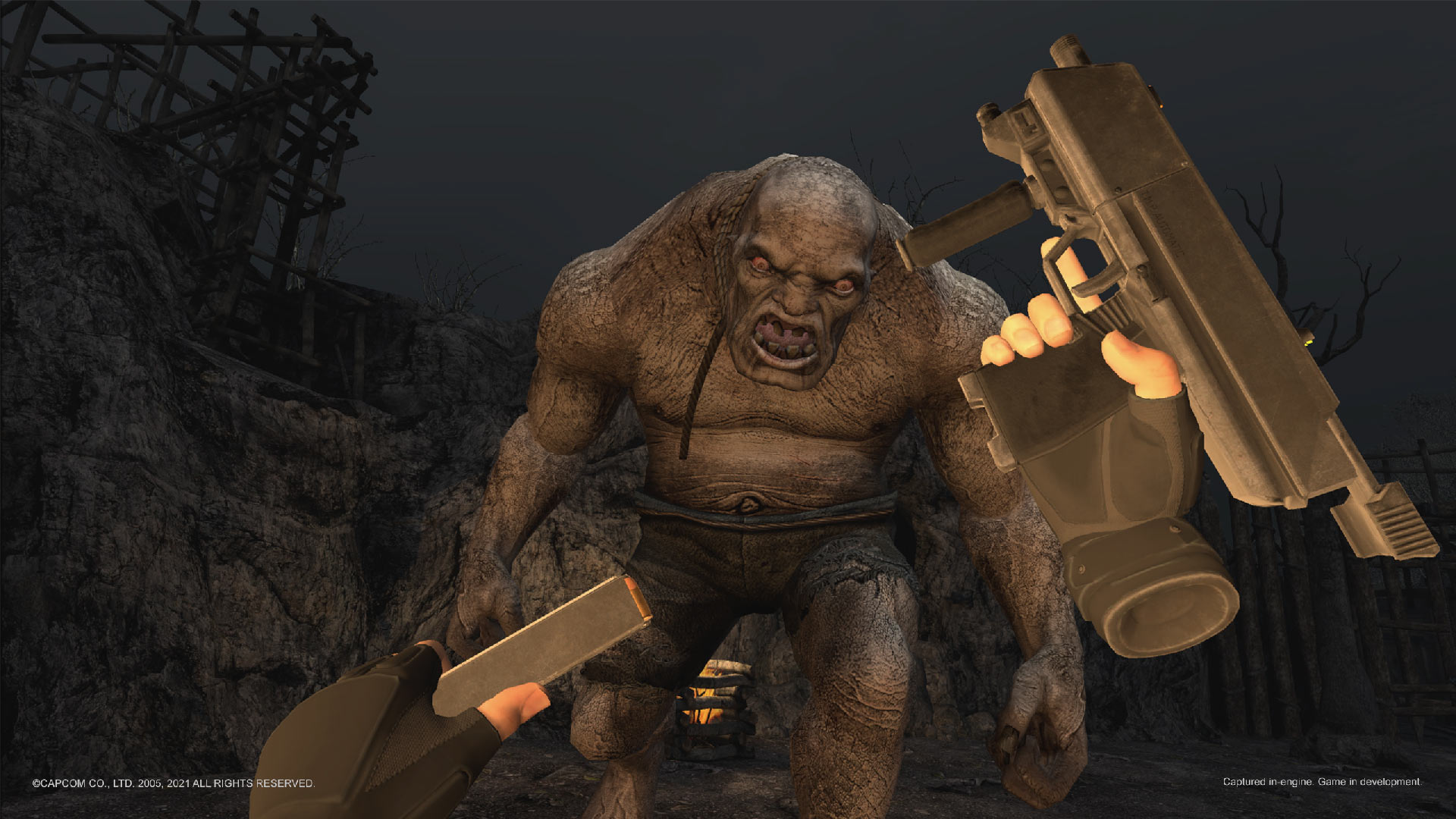Resident Evil 4 for Oculus Quest 2 definitely shows its age—it would be impossible not to given its lineage as a groundbreaking survival horror game initially launched on GameCube in 2005. Despite leaning on what have now become well-worn gaming tropes, RE4 for Quest proves to be an expert VR port that still manages to deliver a lot of fun.
Resident Evil 4 Details:
Available On: Oculus Quest 2
Release Date: October 21st, 2023
Price: $40
Developer: Armature Studio
Publisher: Oculus Studios, Capcom
Reviewed On: Quest 2
Gameplay
I remember playing Resident Evil 4 on GameCube back in the mid-2000s and marveling at its cinematic flair, memorable bosses, extensive weapon upgrade system, cutscene quick time events… all of it made for a potent experience that few games have lived up to in my memory since. As RE4 crosses the threshold into VR though, there’s an opportunity to see the game in a new light—pick through the good, the bad, the timeless, and the obsolete to get a fuller picture of what this game is for us today.
If you’ve played before on flatscreen, you may be happy to stop right here when I say that RE4 on Quest 2 is a pretty straight forward VR port that is a very competent translation of the 16 year-old game. It shaves off enough of the hard edges encoded in a shooter of its time (a third-person game at that) whilst giving it just enough graphical fidelity to make it feel like how your mind’s eye remembers it. You’ll like playing it in the first-person in VR. Full stop.
Now for everyone else.
It’s easy to see why RE4 is a good candidate as a VR port. It has tactical shooting that requires accuracy, puzzles that translate pretty well to VR, and a vast world to explore that will take you between 15 – 20 hours to complete. It’s not a perfect VR transplant, since its has a ton of 2D cutscenes presented on a virtual screen and abstracts away some movement stuff that detracts from immersion, but those things would have to be entirely re-imagined to position it closer to VR-native territory. It isn’t, and that’s mostly okay.
Shooting is a giant part of the game, so it’s nice to see that the Quest 2 port has done it justice. Being able to manually reload and shoot each of the game’s iconic weapons (scopes included) at endless hordes of zombified villagers and cultists feels great. You’ll find the overall pace of the VR port much more plodding than the flatscreen version since reloading, healing, and switching weapons isn’t abstracted away with single button presses. More on inventory and holstering in Immersion.
RE4 is pretty slow from a shooter perspective since most enemies don’t run at full clip or jump out from around a corner to attack you. That doesn’t mean you won’t easily get overwhelmed though. If you approach it linearly and pump away wildly, you’ll find that all of those precious bullets you scrounged up are as good as useless. Baddies typically take multiple headshots to kill, so you need to think more tactically by doing things like leading the mindless goons down hallways, tripping them, and attacking when they’re down. It’s rare to get a perfect one-shot kill without a high level weapon like a sniper rifle or maxed-out shotgun, so enemies can be frustratingly hard to dispatch when they start ganging up—especially when its a mixed group of all enemy types, which include standard, armed, explosive, heavy, and mutated baddies.
RE4 offers up a bunch of varied bosses, although killing them is usually just a matter of spraying them with bullets and revealing a specific weakness—patently classic boss battles. Still, even if the formula isn’t terribly clever according to today’s standards, all of them are beautifully grotesque in their own special ways that especially pop in VR. Lord Saddler, the game’s main antagonist, is truly a sight to behold when its his turn to shine. And El Gigante, is well, very gigante.
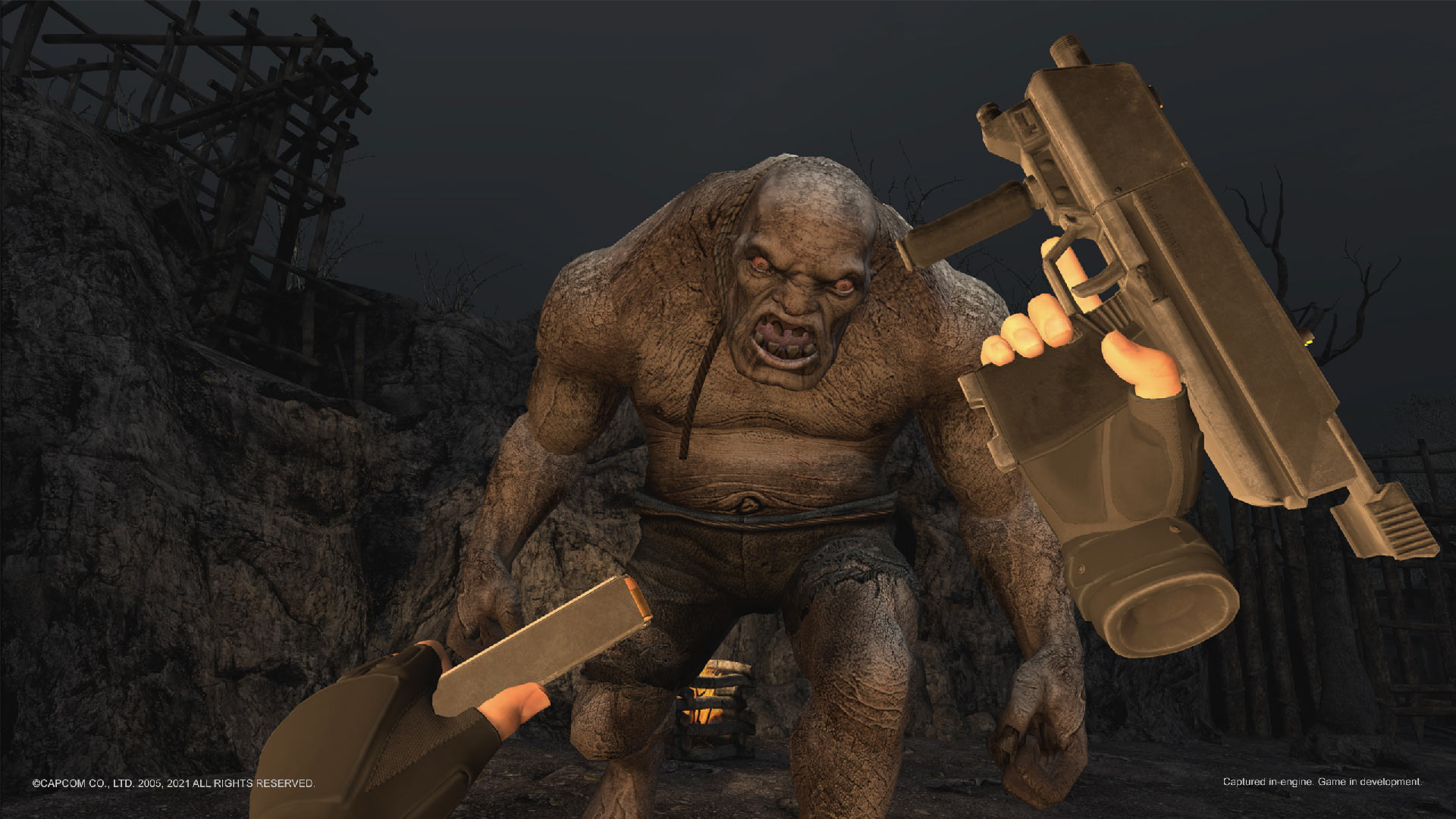
While some of the game’s narrative is told through found notes, RE4 relies heavily on 2D cutscenes to serve up the sort of melodrama that you’d expect from an early ’00s thing that is very comfortable in its own skin as a gamey game, i.e. something that isn’t big on realism and relies on well-worn gaming tropes to deliver the action.
These cutscenes are preserved in the original, however quick time events have been altered for Touch controller input. You might need to shake you controllers up and down in a running motion to get away, or side to side to break the grip of an enemy when prompted, just like you might with a button press on the traditional gamepad. The moments when quick time events trigger is almost always unexpected, so it’s a nice jolt to the system to keep you on the edge of your seat.
The physicality of quick time movements works really well here despite being removed from the action physically. There are quick time events based on button presses, but those use trigger input, which is much easier to parse mentally instead of requiring some random assortment of X,Y, A, and B buttons (who can remember where those are anyway?).
Even by today’s standards, Resident Evil 4 is a great game for all of the reasons I mentioned above—and many of the strides to adapt it to VR are successful—although it’s impossible to ignore some of the dialogue clunk and themes that simply wouldn’t make it into a title of its caliber today. Yeah, I’m talking about how Ashley is a stupid damsel in distress whose main function—outside of a few puzzle interludes—is the object of an escort mission that basically takes up half of the game. Both escort missions and shitty female stereotypes suck, and if it were a re-imagining instead of a direct port I’d have a lot more to say about it from a writing and design standpoint.
Immersion
Did I mention RE4 is a gamey game, replete with a dude that just sort of pops up and buys whatever jewels you can find in the corpse of crows, that you blow up with grenades, that you find inside the disappearing body of Spanish villagers for some reason?
Okay, so there’s zero expectation of realism in a narrative sense, which is fine since it’s all loveable RPG legacy stuff, but I was hoping the game’s physicality would be a little more grounded to allow for a more visceral experience in VR.
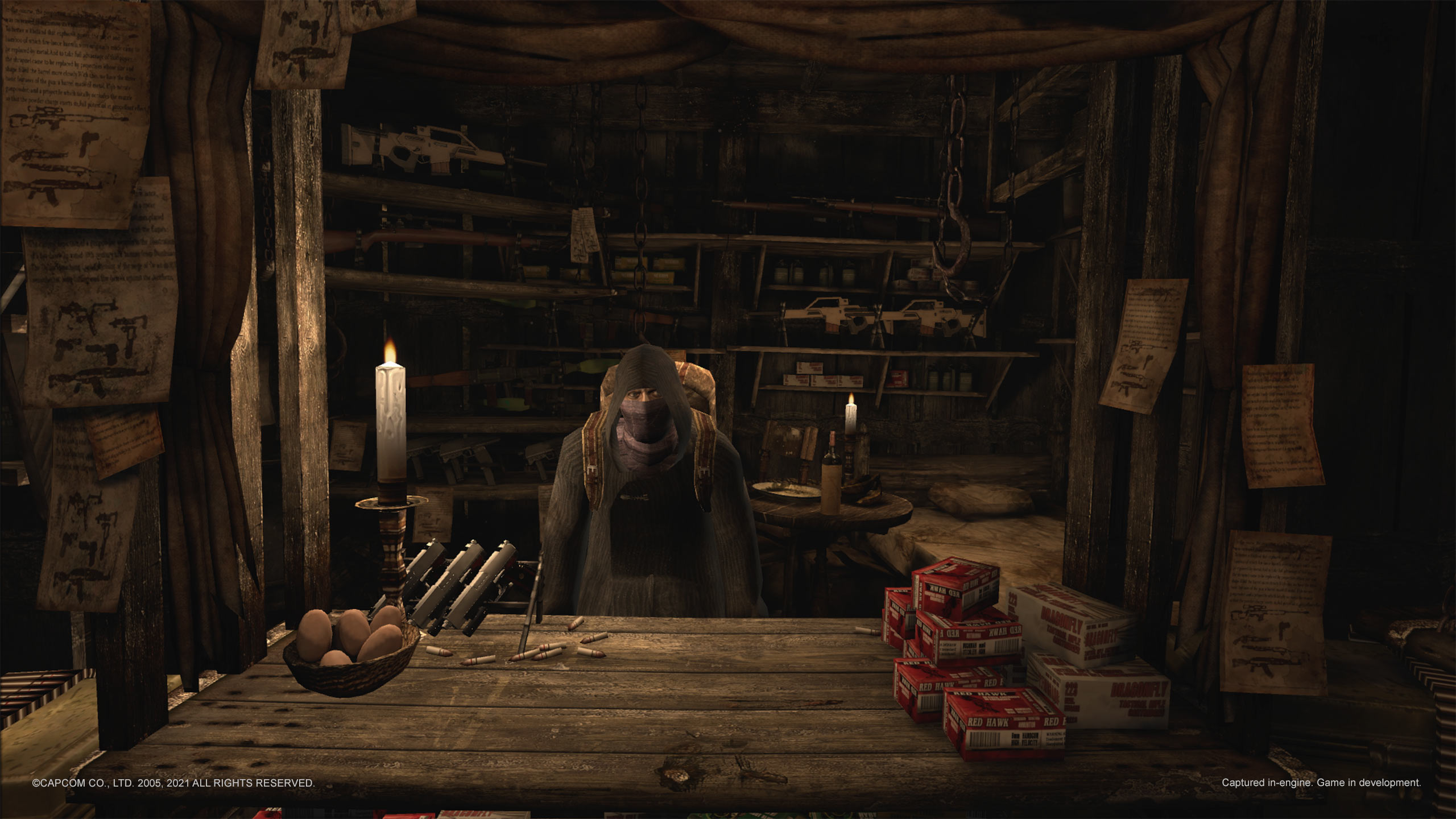
If Resident Evil 4 were produced from the ground-up for VR today, the first thing I’d want are physics-based enemies that feel more solid and real. As it is, baddies feel weightless, and slashing at them with your knife feels a bit like shadow boxing and hoping it dies somehow. Enemy types repeat very often, sometimes in a gang of three or four, which takes away from immersion somewhat.
Character animations and game geometry are all the same—both rock solid to be clear—but textures have been uprezzed so as not to be horribly blocky and muddy like you might expect from simply shoeing in VR support directly to the PC version. At first, I thought it looked mostly like I remembered, but when I go back and watch video of the game on GameCube, you have to appreciate the time and effort put into polishing every corner of the game. It’s also amazing to think it comes in just under 8GB considering just how large it truly is.
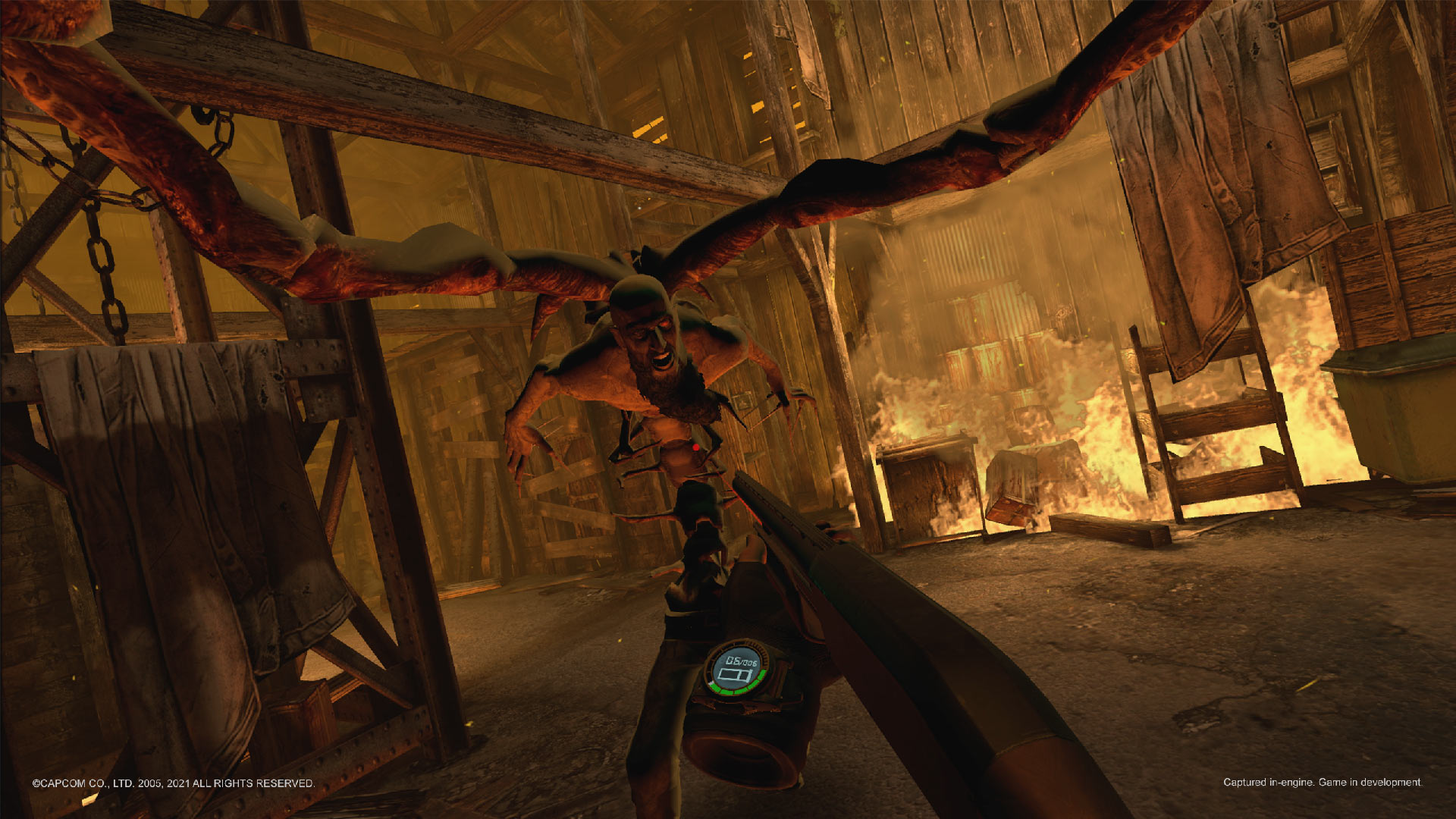
That said, object interaction feels like a bit of a half measure. Levers, doors and puzzles operate as you’d expect, and have been redesigned to be physical objects, however found objects are insubstantial things that fly to your hand and disappear into your inventory. I think the game could do more by letting you climb ladders and remain in your body for some things like kicking down doors, which feels a bit too much of a break in immersion during a hectic fight.
As for inventory, the main inventory is present and accounted for, although you thankfully won’t need to rely on it nearly as much as in the flatscreen version.
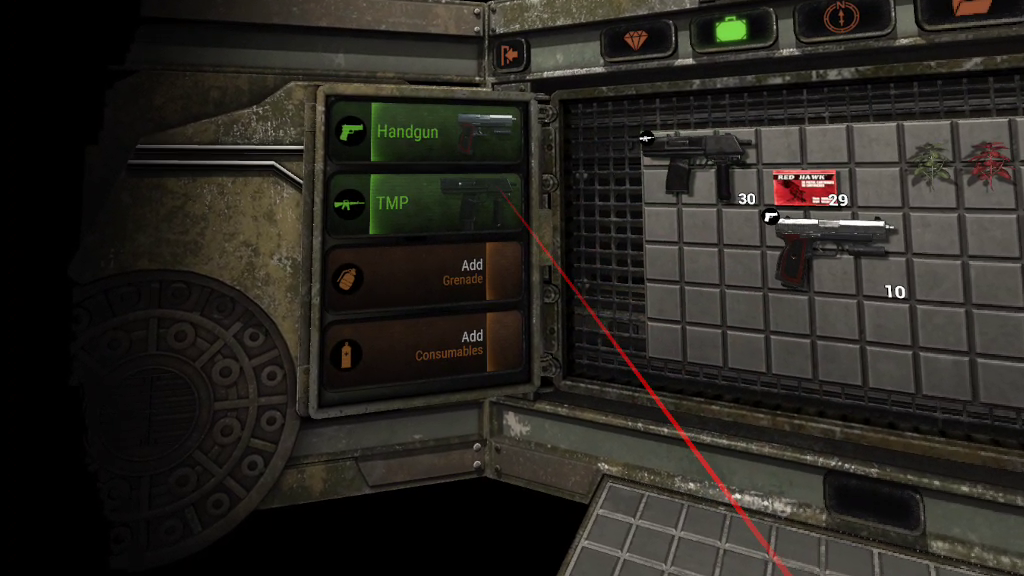
There are two main modes for accessing weapons and gear, both of which I actually really like.
The default is what I’d call an almost-standard configuration which puts everything you need on your person. Instead of having to reach down to your hip for your pistol though, which can be a pain when in a chair with arms, you’re given a floating weapon slot near your shooting-dominant hand and a similar ammo slot for your non-dominant hand. Simply reach out and grab either ammo or pistol and drop when no longer needed. You’ll need to rely on the main inventory more once you start getting more guns though, since you can only bind two guns to your body; one in front of you and one on your shoulder.
The second is a quick-grab config that lets you cycle through guns via an in-game UI, which lets access all of the stuff in your suitcase at the press of a button without stopping the action. Although less immersive, this is much more useful as you get more guns and need to switch between them on the fly. Gun models don’t have ammo counters, which is placed on your wristwatch along with your health bar and money collected.
Comfort
Thanks to its slower-paced nature, RE4 is really comfortable and features a host of variables to tinker with so you can get it just the way you want. Check out the table below to see just what’s on offer: basically anyone can play it and not have to worry about comfort.
There are a few moments when you need to do platforming, and there are two notable minecart rides, although these are few and far between.
‘Resident Evil 4’ Comfort Settings – October 20th, 2023 |
|
Turning |
|
| Artificial turning | ✔ |
| Smooth-turn | ✔ |
| Adjustable speed | ✔ |
| Snap-turn | ✔ |
| Adjustable increments | ✔ |
Movement |
|
| Artificial movement | ✔ |
| Smooth-move | ✔ |
| Adjustable speed | ✖ |
| Teleport-move | ✔ |
| Blinders | ✔ |
| Adjustable strength | ✔ |
| Head-based | ✖ |
| Controller-based | ✔ |
| Swappable movement hand | ✔ |
Posture |
|
| Standing mode | ✔ |
| Seated mode | ✔ |
| Artificial crouch | n/a |
| Real crouch | ✔ |
Accessibility |
|
| Subtitles | ✔ |
| Languages | English, Japanese, French, German, Spanish (Mexico) |
| Alternate audio | ✖ |
| Languages | ✖ |
| Adjustable difficulty | ✔ |
| Two hands required | ✔ |
| Real crouch required | ✖ |
| Hearing required | ✖ |
| Adjustable player height | n/a |
,
